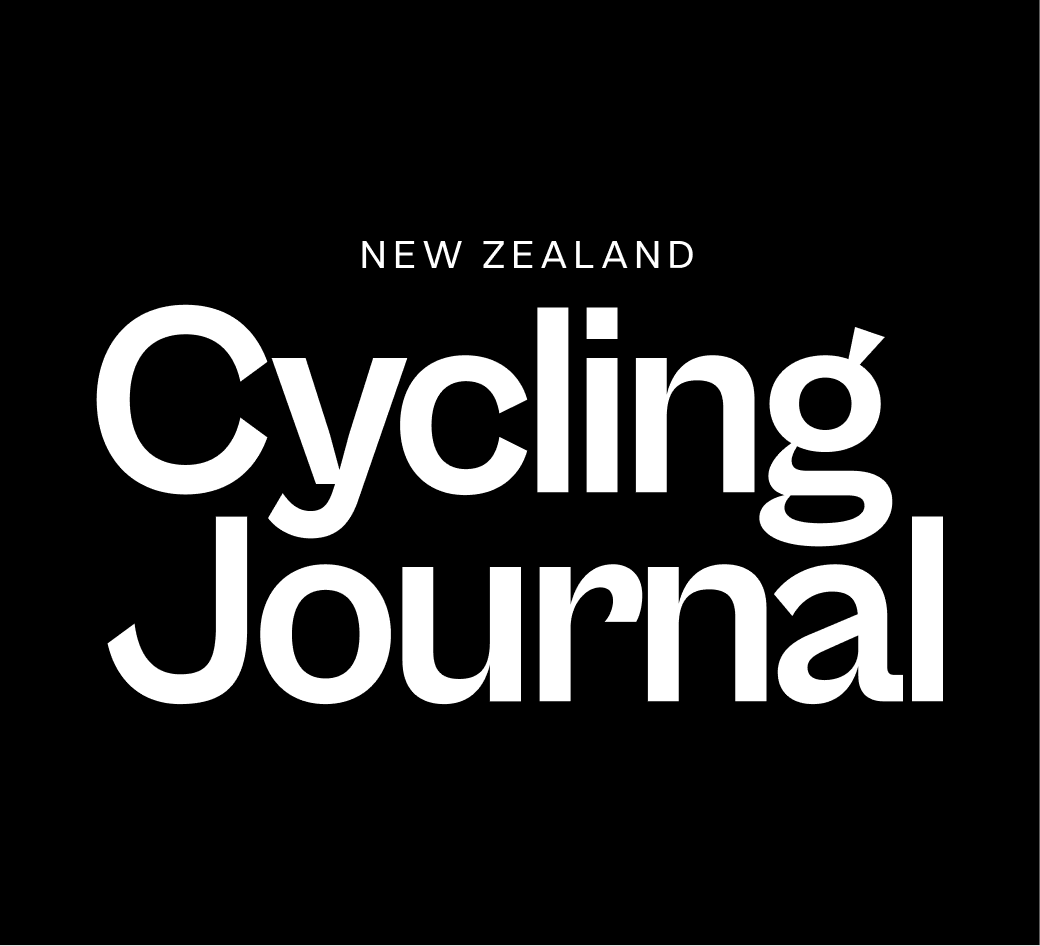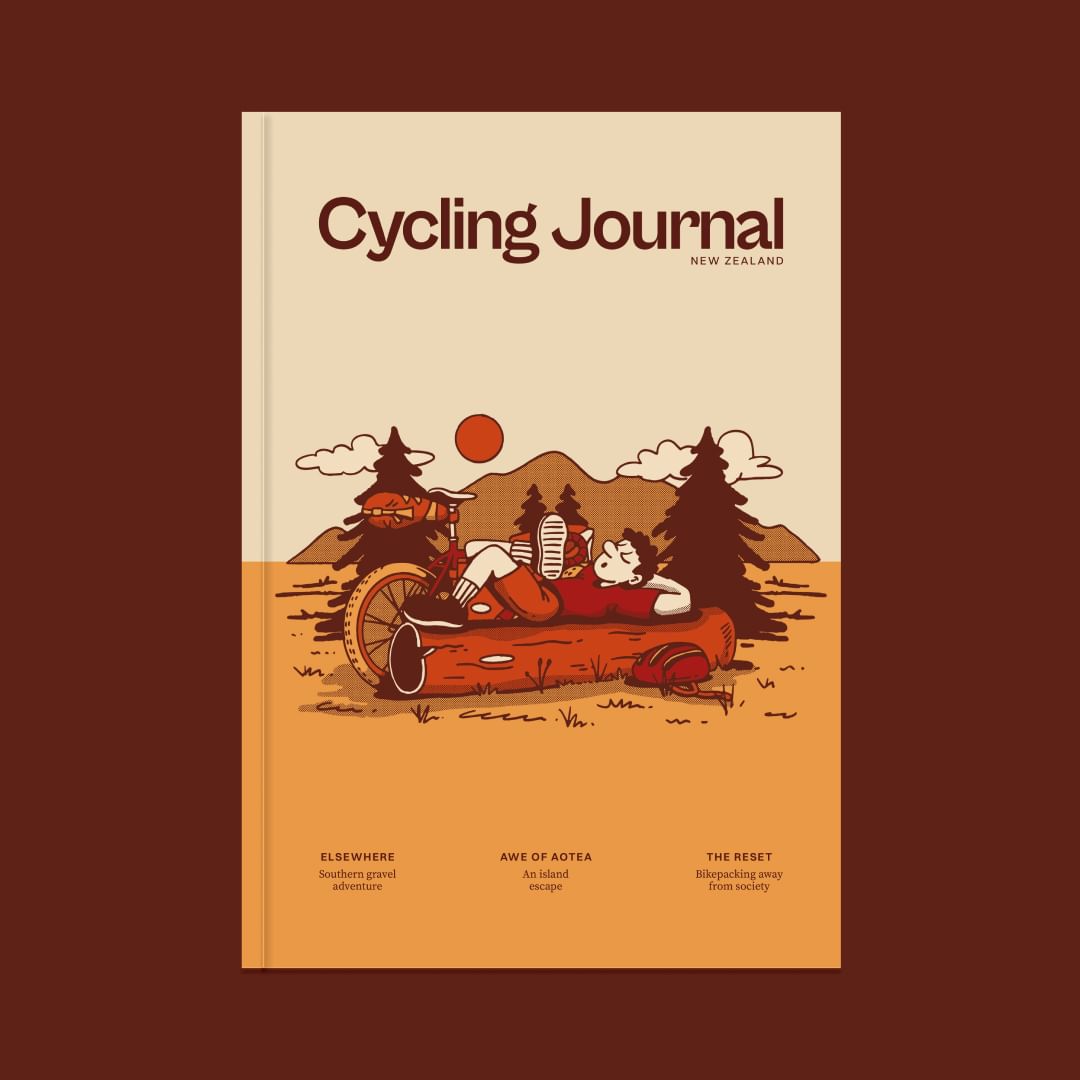Words by Liam Friary
Images by Jakob Lester
There’s a real lure of an island that sits right on the edges of our largest city. It’s been on my radar for some time and there’s been a few abandoned attempts due to weather, timings and getting a crew together. But this place needed to be discovered and explored – not that we’re the first to do so, or the last. Finally, everything aligned, and we would get to experience this island paradise for ourselves.
Aotea Great Barrier Island lies in the outer Hauraki Gulf of New Zealand, 100 kilometres north-east of central Auckland. With an area of 285 square kilometres, it is the sixth largest island of New Zealand. The island was initially exploited for its minerals and Kauri trees and saw only limited agriculture. There’s around 1,000 inhabitants on the island, mostly making a living in the farming and tourism sectors. Most of the island (around 60% of the total area) is administered as a nature reserve by the Department of Conservation (DOC). DOC has created many walking tracks through the island, some of which are also open for biking.
On this occasion, Lester Perry, Jakob Lester and I would ride and camp out, keeping us in the outdoor environment for entire trip. There’s something special about being fully self-sufficient and having everything you need to live for a few days on the bike. These exploration riding trips get me excited, and the crew were amped up for the adventure that lay ahead of us.
I got my first glimpses of the island’s stunning beaches – turquoise waters and brilliant white sand crescents tucked into secluded coves. The winding road massaged its way along the island’s spine, constantly undulating over distinct climbs that each revealed more stunning viewpoints.
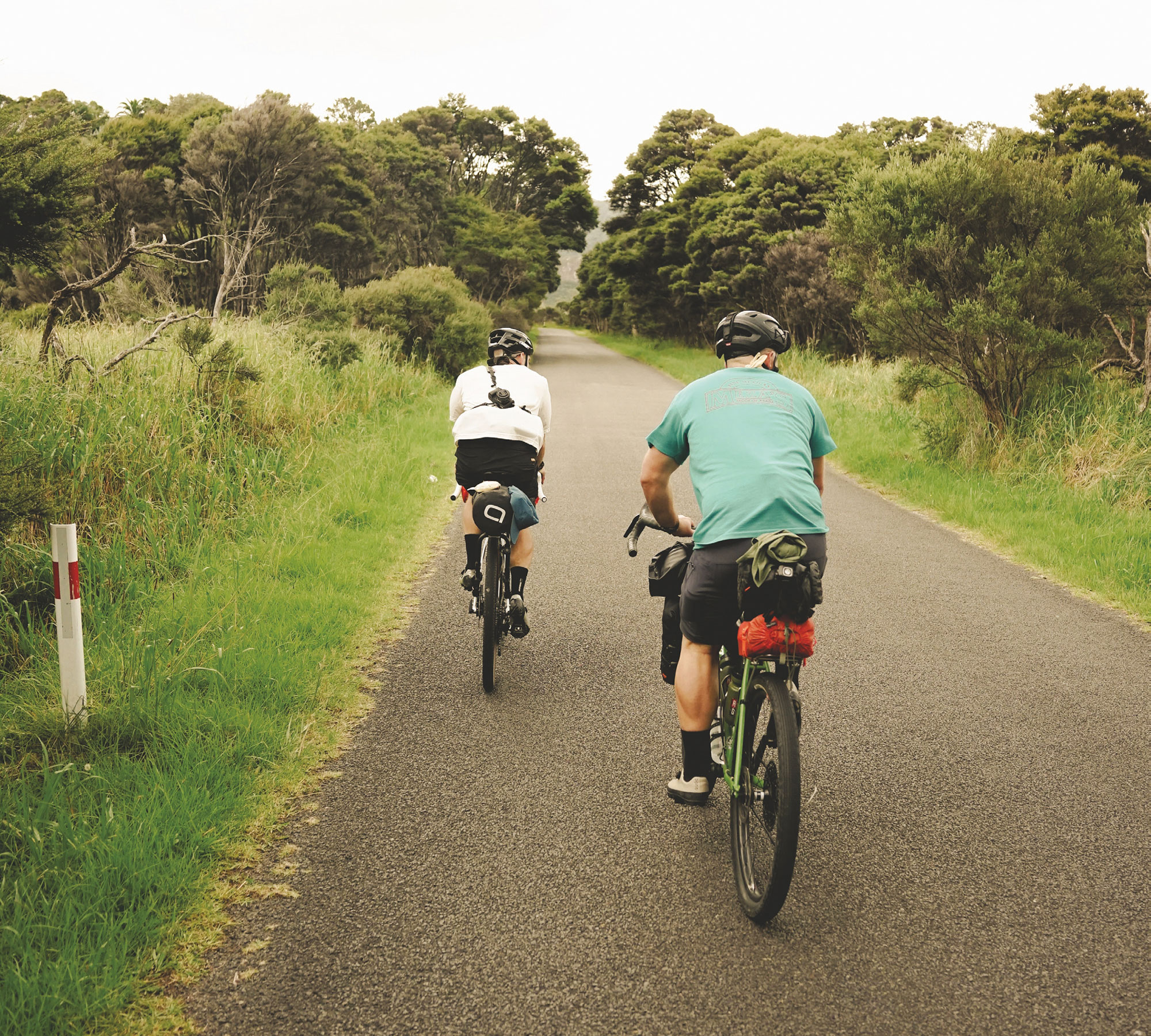
DAY ONE
The piercing beep of the 5am alarm dragged me from my slumber into the still-dark morning. After a quick bite of toast, strong coffee, and final gear check, I shouldered my heavily laden bike and pedalled off into the quiet streets, heading towards the ferry terminal.
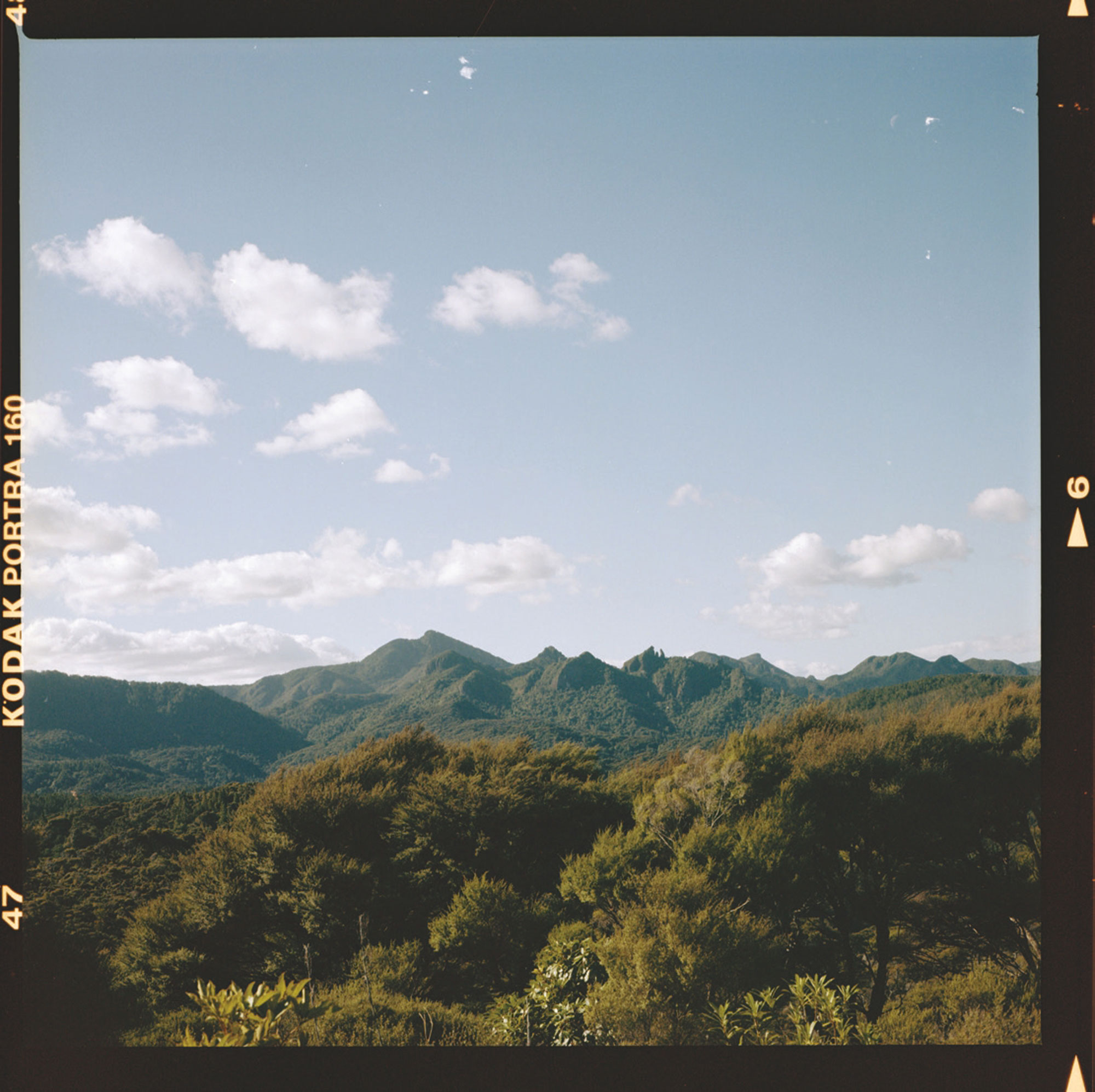
The commute was serene yet eerie, the only other souls being commuters heading to work, a few late-night revellers stumbling home, and group fitness classes scattered through the city’s parks. Lester and I swapped turns closely following each other’s red rear blinking light.
As we arrived dockside, the ferry was already being prepped, its deck lights casting an ethereal glow over the gently undulating waters. I was dripping from a hard tempo effort down the bike lanes to Auckland City and the sweat clung to my old cotton tee. The weather forecast didn’t look promising, with moody storm clouds massing on the horizon. We all rolled our bikes onto the barge and stowed them where they hopefully wouldn’t fall over. We claimed a spot on a port side of the vessel, perching ourselves on a bench to begin our voyage out into the Hauraki Gulf towards the Coromandel Peninsula and eventually onto Aotea Great Barrier Island.
It didn’t take long for the seas to build into a churning maelstrom as we left the protection of the harbour. The ferry pitched and rolled with each swell, its bow periodically burying into the waves, sending cascades of whitewater sluicing across the deck. Many passengers soon turned a sickly shade of green, as the mainland dissolved into the greying distance. The rain intensified so we shut the hatch that offered us a view out to sea. Now I couldn’t see the horizon at all and was starting to feel sick myself. Stubbornly, I maintained my seat on the rickety bench until I could finally take no more of the boat’s rocking and rolling. I needed to get up and badly! I stumbled my way over to the loo and found most of the cubicles taken, except one that someone had already sprayed spew around. I had no choice but to commit to this one as it was now urgent! The boat swayed and I tried not to touch anything with my hands. I had a spew and to be honest it was a relief – I felt better right away. A passenger by the window commented; “you alright, cuz?” I obviously didn’t look good. He offered me the window and said, “get some fresh air and look out there cuz – after that you should be sweet.”
After what felt like an eternal, nauseating transit, the rugged outline of the Coromandel faded, and Aotea was now finally firmly on the horizon. I have to say the ferry – or rather, barge – is bloody long (around four-and-a-half hours on a good day) so I really was looking forward to getting off. Staggering down the ramp onto stable land, I was grateful to regain my balance and composure. The island greeted us with a lush tapestry of towering palms swaying in the ocean breeze, pristine beaches, and a charming rustic aesthetic.
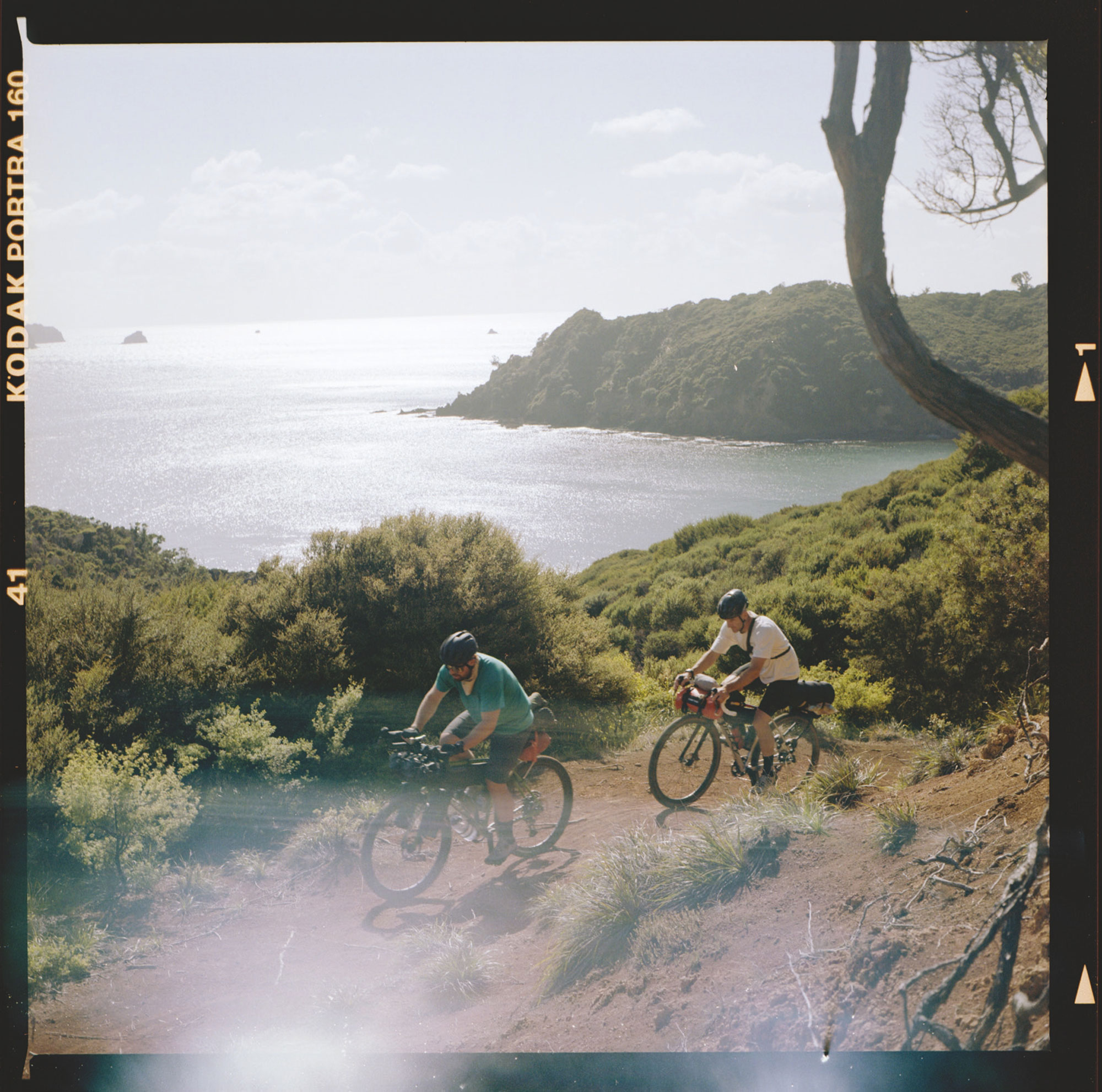
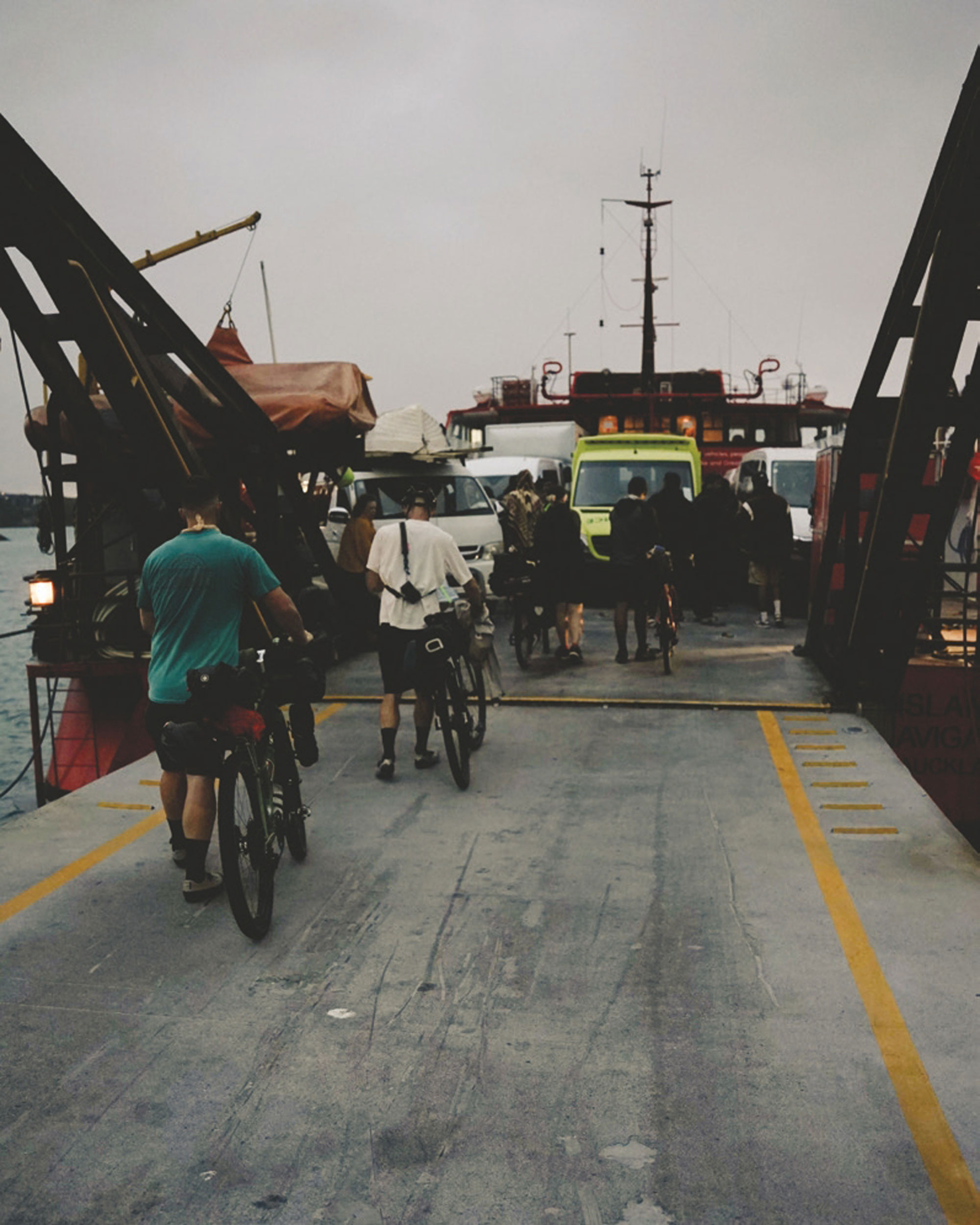
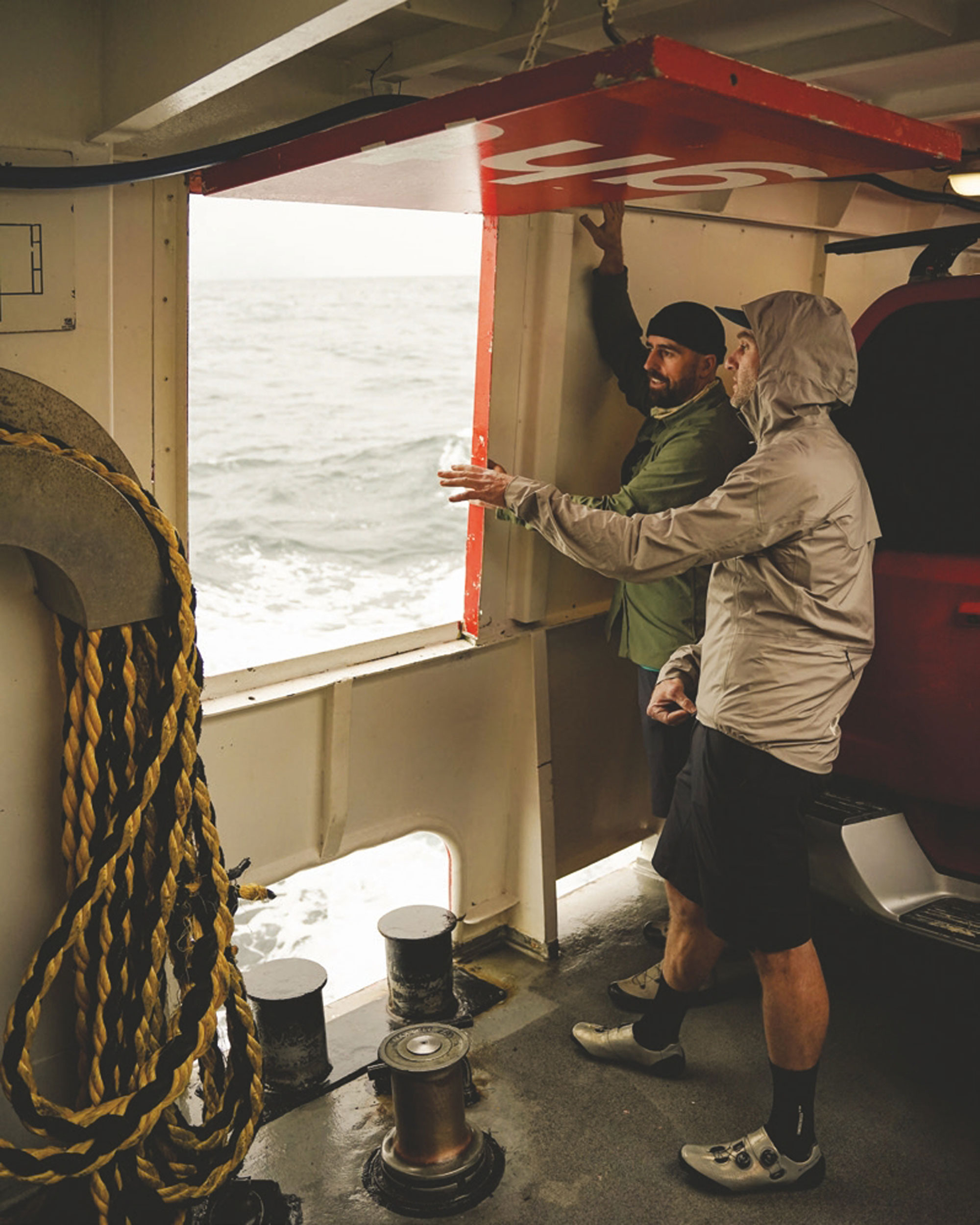
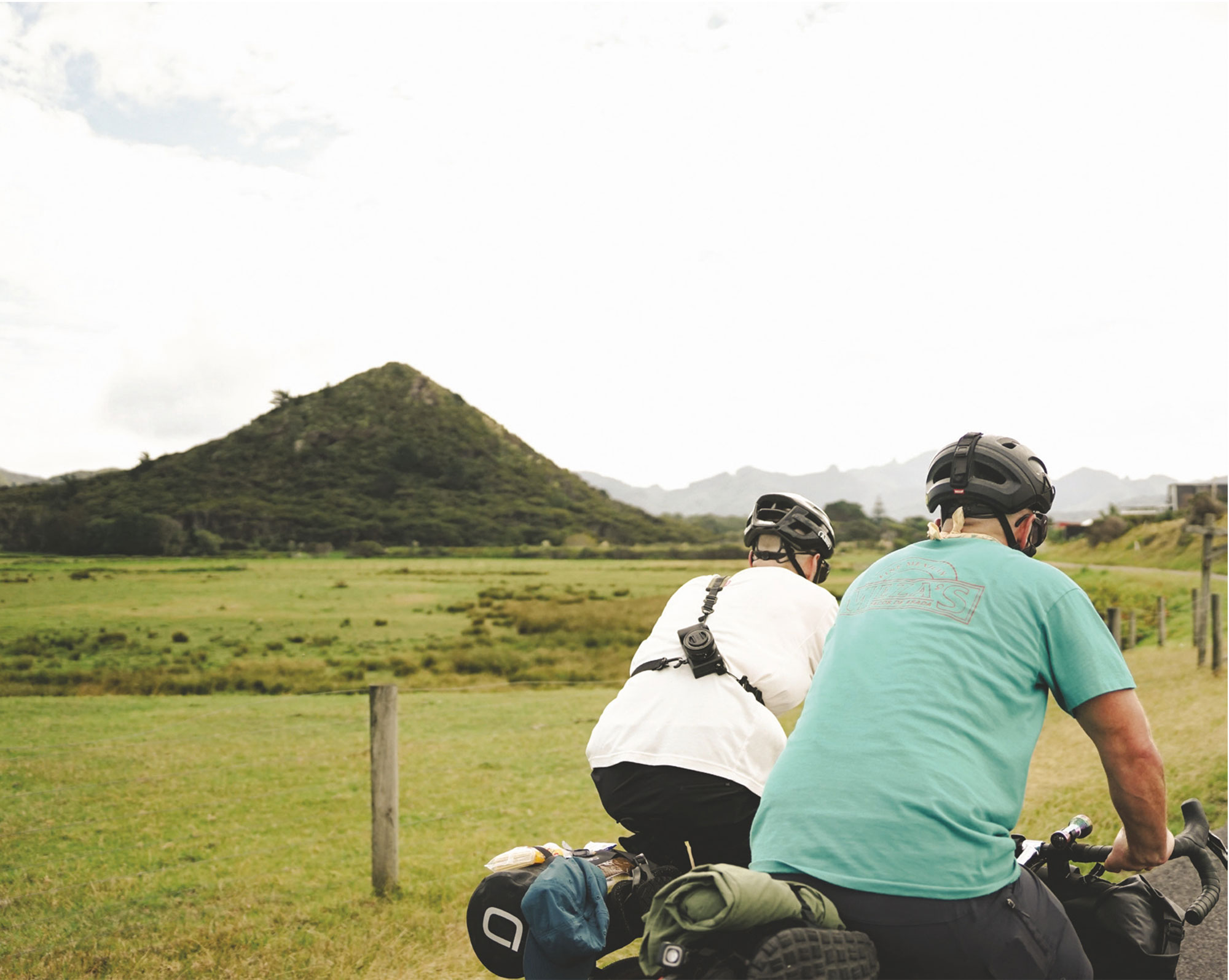
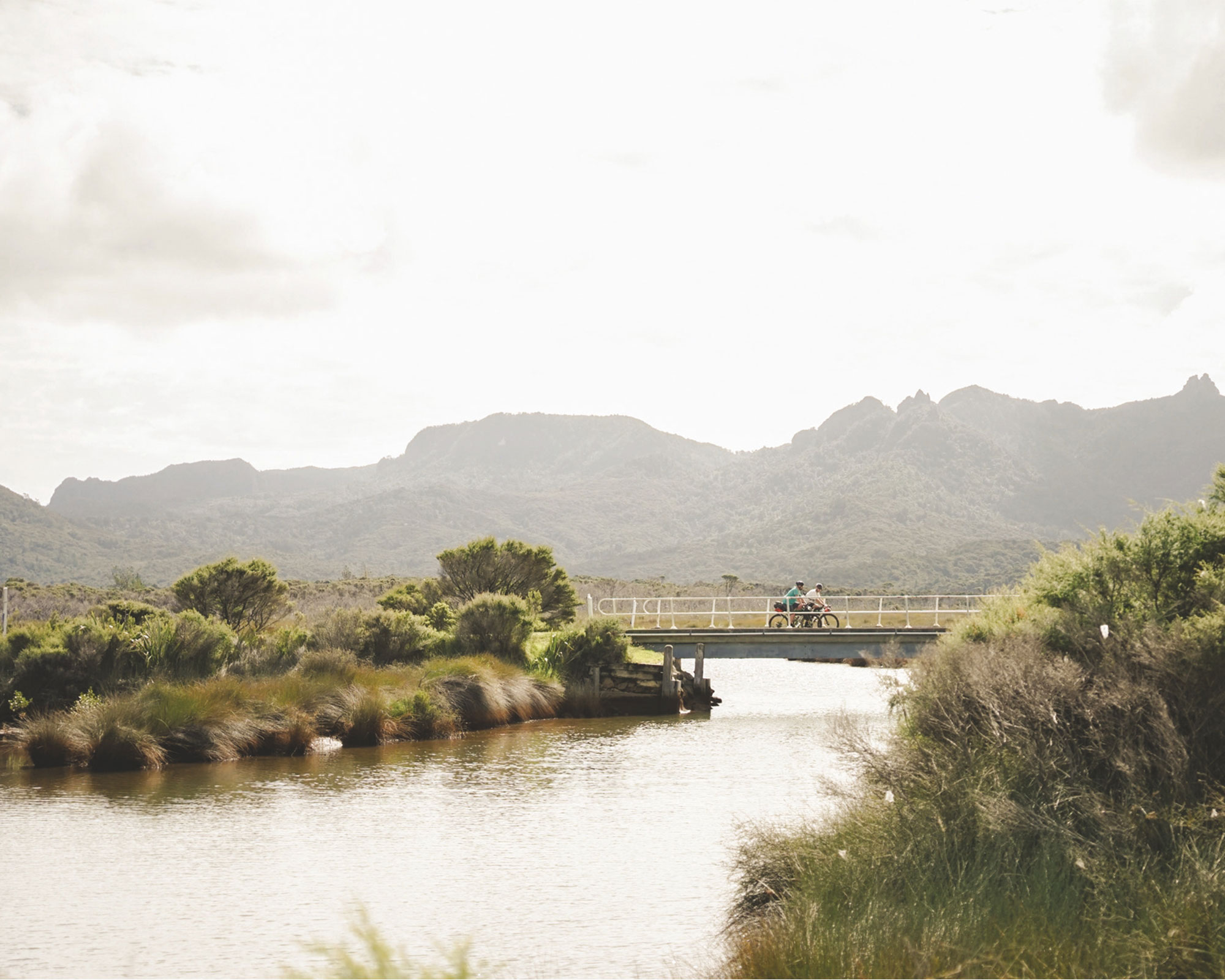
The place just felt different to me; this is possibly down to its remoteness, iconic landscape, and different pace of life.
An island local who had been on the ferry warned, “you boys best be ready for proper hills as it’s all up and down on this island!” She wasn’t kidding – the road from the ferry immediately launched into a climb. I looked up to see steep hills with jagged peaks covered in dense bush. I clicked down to my lowest gears as we ventured round the coast, heading north. I got my first glimpses of the island’s stunning beaches – turquoise waters and brilliant white sand crescents tucked into secluded coves. The winding road massaged its way along the island’s spine, constantly undulating over distinct climbs that each revealed more stunning viewpoints. As we ventured deeper, we started to uncover Aotea’s raw beauty. The place just felt different to me; this is possibly down to its remoteness, iconic landscape, and different pace of life.
We rolled through Medlands beach where life appeared to move slowly. As this was about exploration rather than covering a ton of ground, we stopped often. One place we stopped was a quirky op shop based out of a garage tucked beside a historic church. It just beckoned us to pause and browse the dense aisles stuffed with vintage relics and overlooked treasures. Continuing northwards through Claris we picked up a few supplies. A few locals were getting lively in the parking lot with banter, making it obvious that this is a tight-knit community where everyone seems to know everyone else’s business. We pressed on to our campsite for the evening.
It was a bit like campsite roulette as there were a few to choose from on the east coast of Aotea. We ended up descending down a tight gravelled lane to Harataonga campsite. It was beautifully nestled amongst the trees and slightly away from the beach, but you could still see the ocean. Both Jakob and I pitched our tents and Lester laid out his swag. As we cooked our freeze-dried meals, spits of rain threatened however didn’t eventuate to much. With no phone reception, yarns flowed into the evening, probably fuelled by a can of beer and sips of whisky. It got dark despite not being that late, but we’d eaten our share of the chocolate and brushed our teeth, so clambered into our tents and sleeping bags. The rain started to pick up again and I felt so snug inside my cocoon.
DAY TWO
It was light but the sun wasn't up as I emerged from my tent. I located Lester still cocooned in his swag under a covered gully, no doubt seeking refuge there from the overnight deluge. He jumped up with the promise of coffee and hot breakfast - we soon had a pot of thick porridge bubbling over our stove.
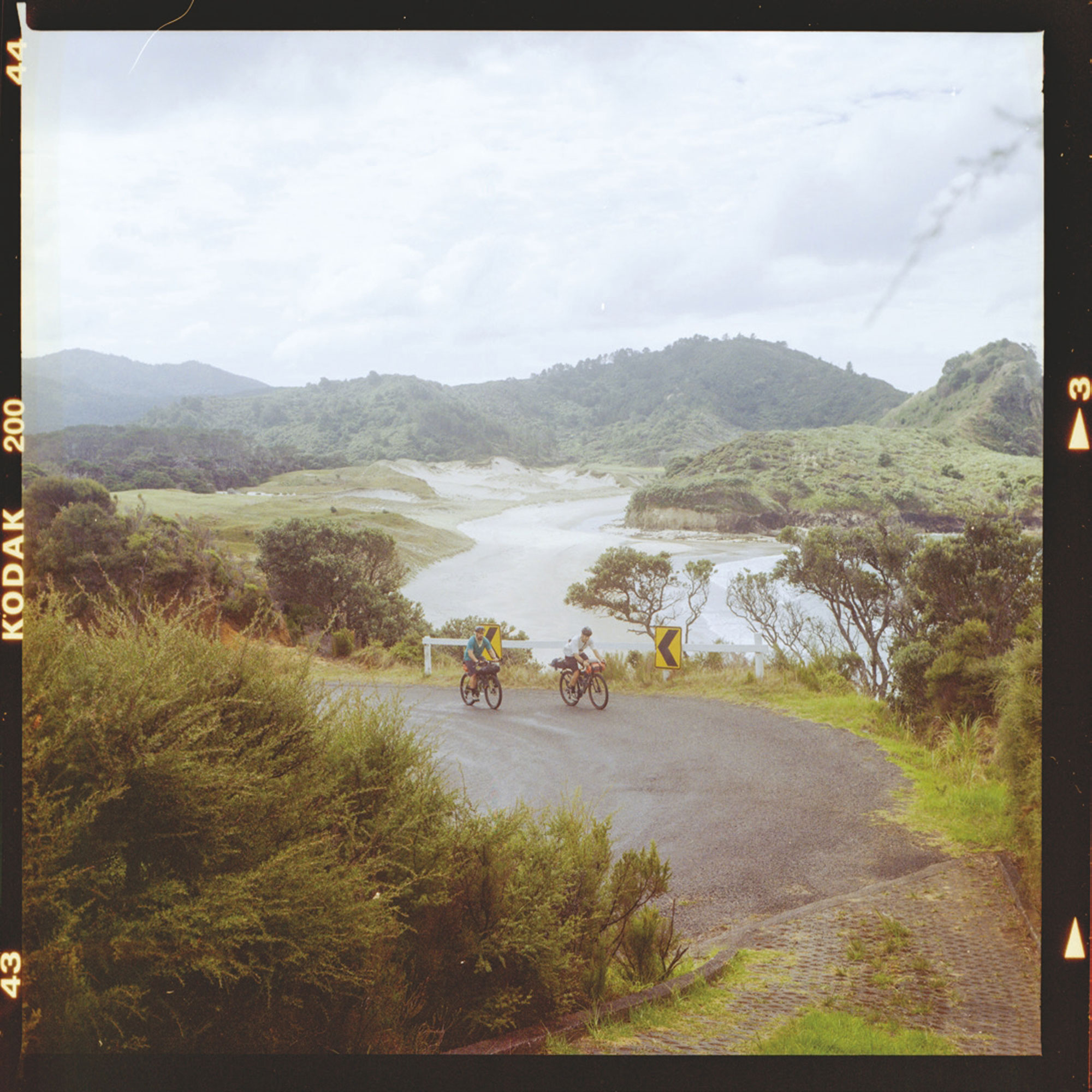
There wasn’t any rush as we gradually packed up camp. With supplies distributed between our load-hauling rigs, we mounted up and pedalled directly onto the legendary Harataonga Track.
Almost immediately, the trail showed off its supremely flowy character as it undulated through the dense bush. This is regenerating coastal native bush of predominately Mānuka, Kānuka, Nīkau, and Tī. A few hoots and hollers echoed – we were all stoked to be riding here. As we pushed on, the coastline was never far off, providing snippets of view through the bush. Every now and then it would reveal itself with isolated coves that housed concealed white sand beaches. A few spots had panoramic vistas and they were enough to stop and take it all in – we were in awe. Immersed in this coastal land I couldn’t help but be overwhelmed by the island’s profound remoteness and isolation from the civilized world. With the South Pacific’s expanse stretching unobstructed to the far horizon, it felt as if we’d escaped to another world. Volcanic rock sculptured over eons laced with bush and rough sea lapping around its rocky outcrops. The end of the trail offered another stunning lookout, this time up to the north and over Whangapoua beach.
Our laden bikes plummeted down the final rocky part of the trail onto the road for a short transfer from east to west. Headwinds prevailed as we ascended another climb before reaching Port Fitzroy, which was our resupply point. We sat at the front of the store for few snacks along with our own brewed coffee and watched as a few boaties came up for their provisions. The sealed road soon ended after Port Fitzroy; a rougher gravel trail transitioned onto the Forest Road. The day was now well into mid-afternoon and before long we farewelled the oceanside views, soon to be replaced by a rapid series of climbs with steep pitches. This area has old native bush including Tī kōuka (Cabbage tree), Kauri, Kōwhai, Horoeka (Lancewood), Mānuka, Kānuka, Nīkau, Rātā, Tōtara, Kahikatea, Puriri, Mamaku, and Rimu. Our laden rigs sawed and bucked with every pedal revolution as we ground up the gradients drenched in perspiration.
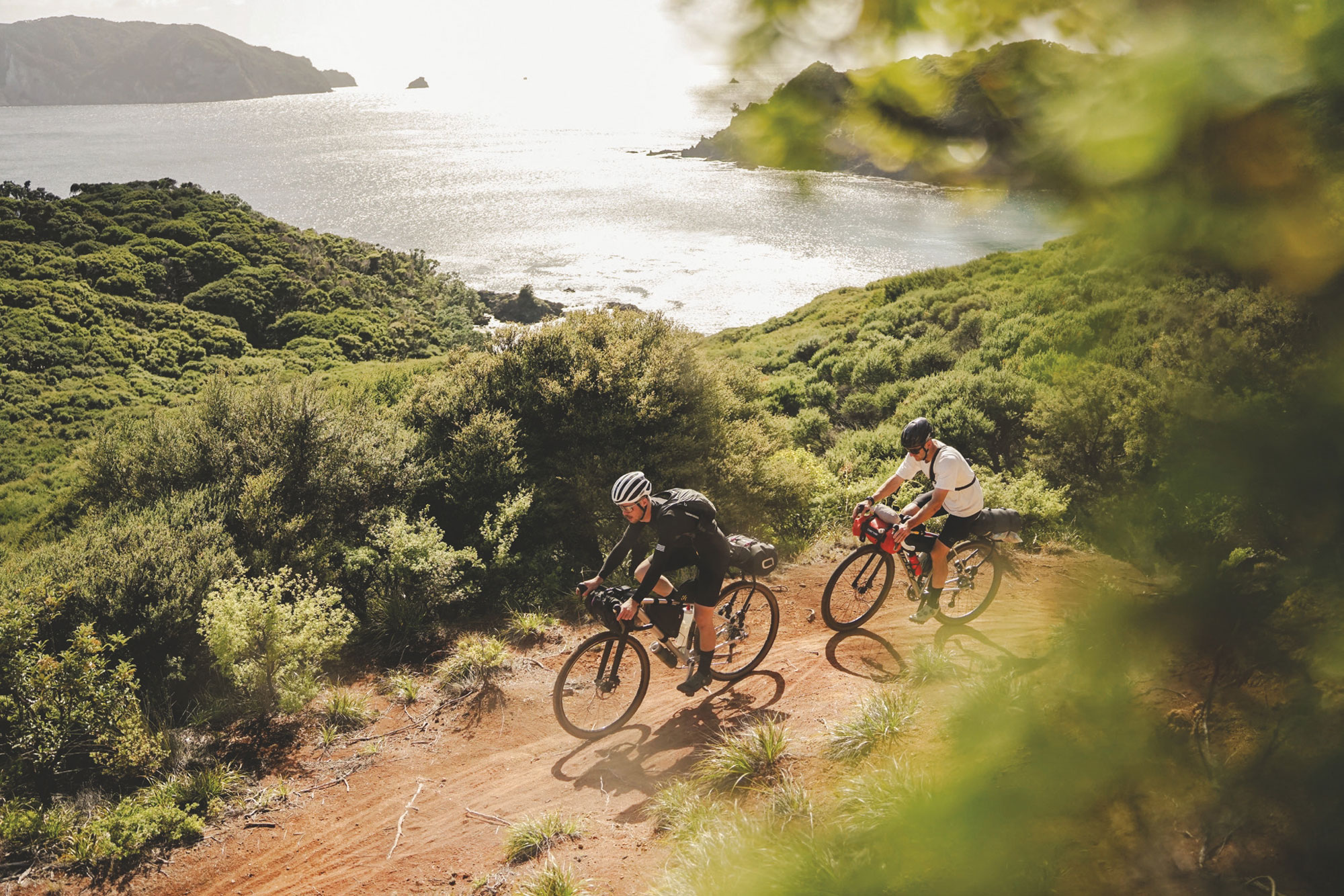
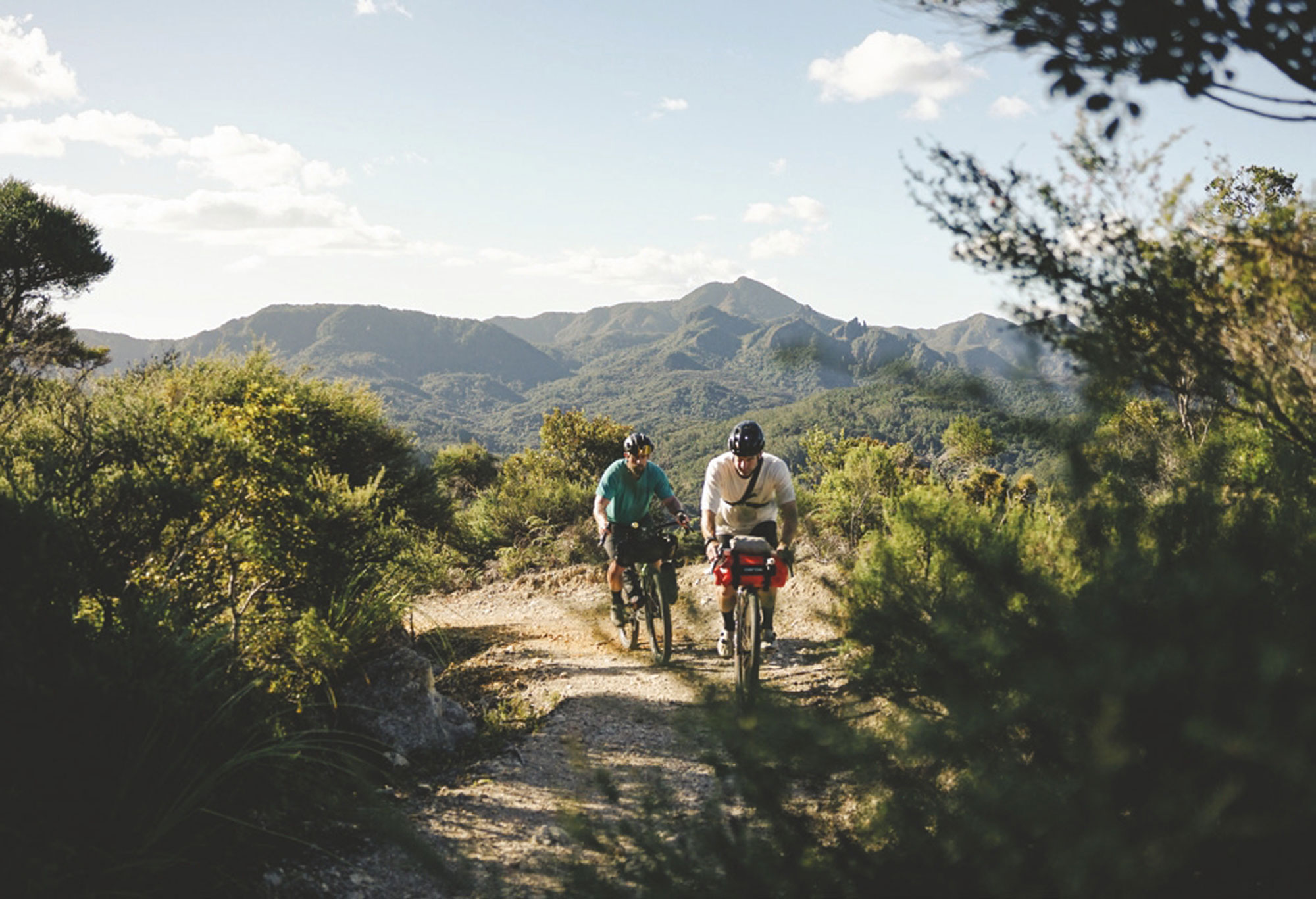
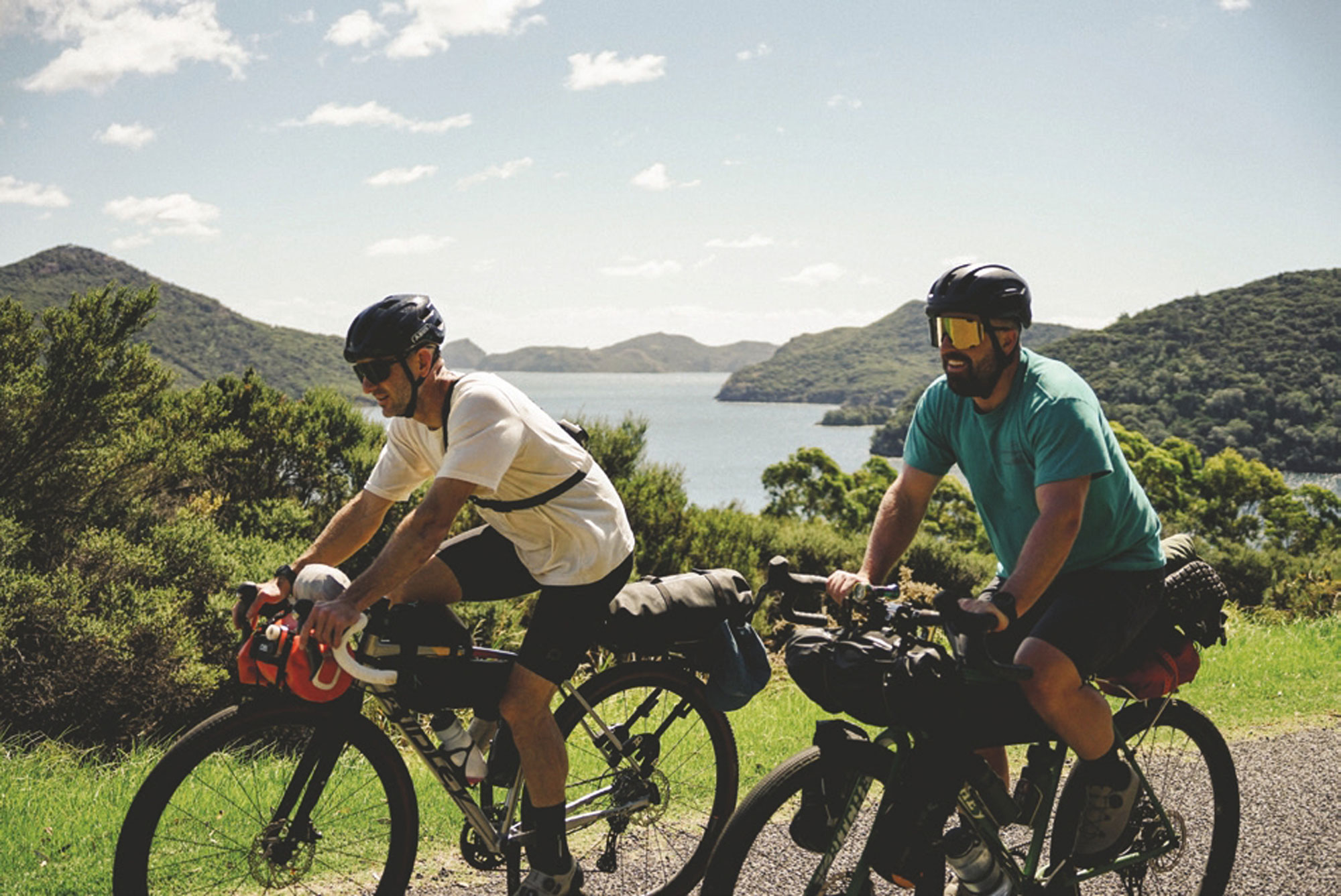
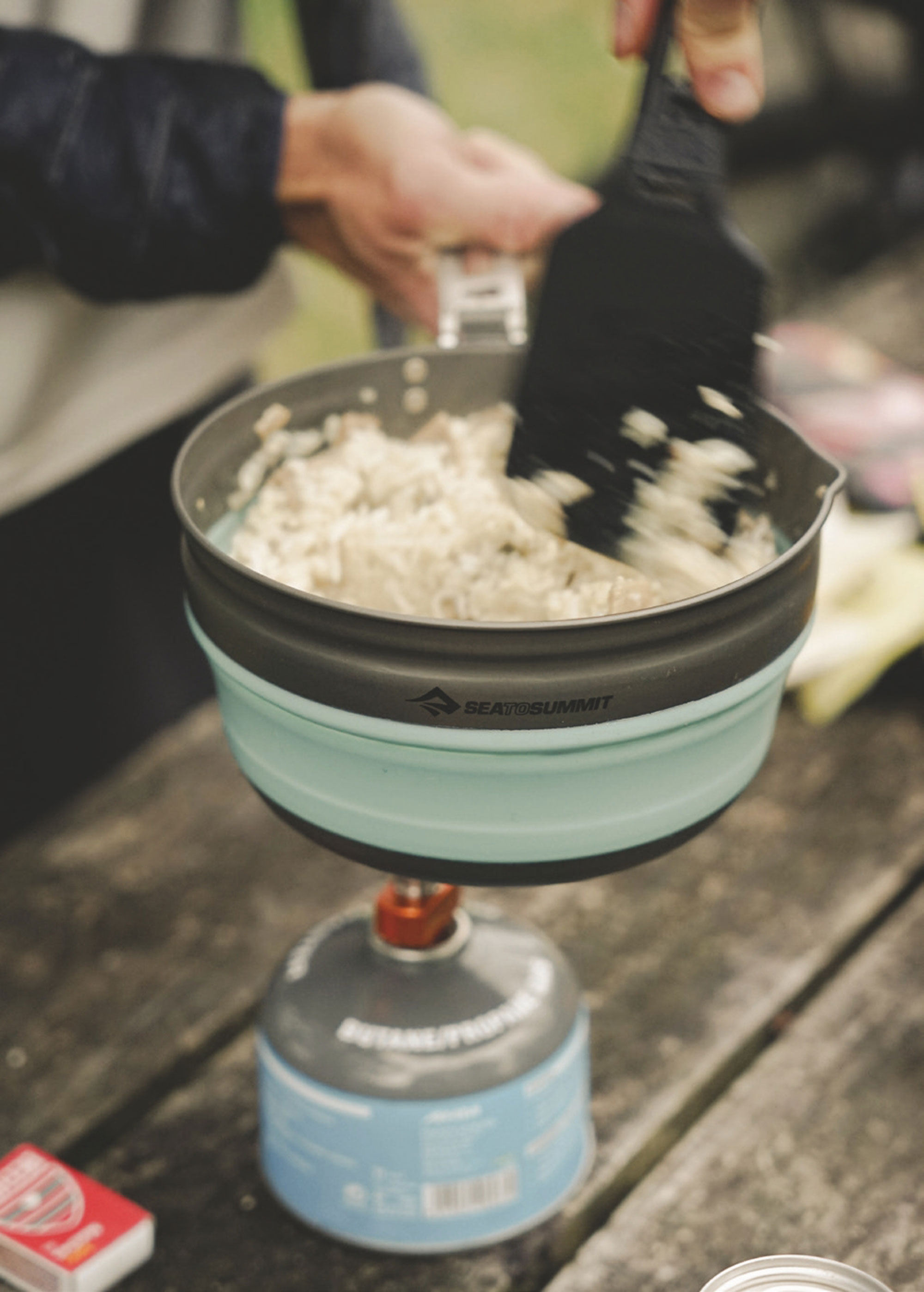
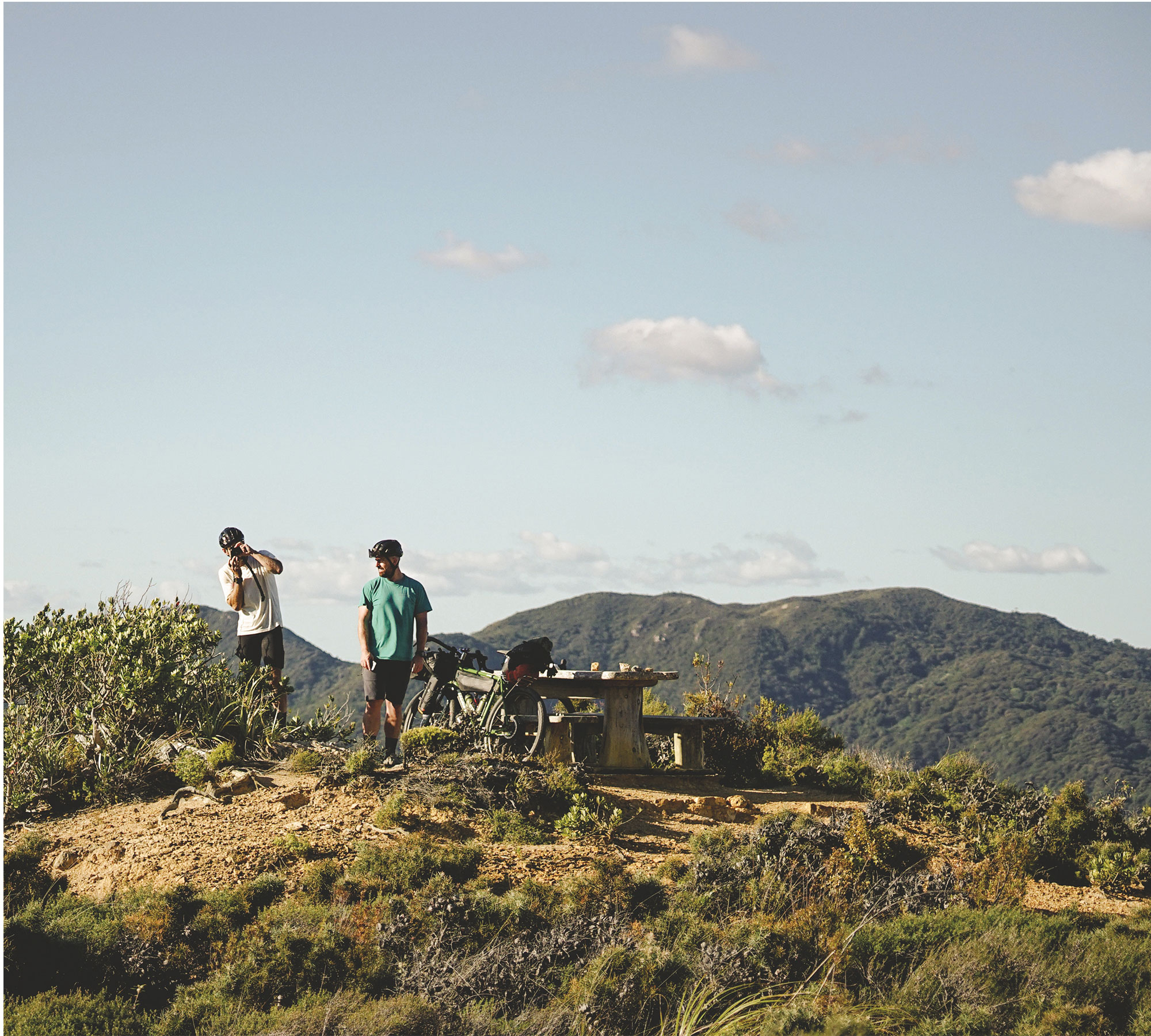
To our right the vast, deep blue ocean shimmered but perhaps more awe-inspiring was that surrounding us in every other direction was a raw and rugged landscape that felt almost Jurassic in its untamed character.
About halfway on this section, we were offered more stunning vistas. To our right the vast, deep blue ocean shimmered but perhaps more awe-inspiring was that surrounding us in every other direction was a raw and rugged landscape that felt almost Jurassic in its untamed character. We pressed steadfastly onwards, the island’s hard terrain was unrelenting, and the physical toll was starting to take hold. The magnitude of this isolated island paradise made us humans feel like tiny specks. The endless series of climbs eventually transitioned us back onto another road, but we weren’t done with offroad sections yet as Te Ahumatā Track was straight ahead.
The track skirts to the island’s east, hugging Te Ahumatā Maunga. It’s high, with jagged volcanic peaks almost everywhere the eye can see. This was a real treat; Jakob, Lester and I were on a high on endorphins from a large day in the saddle. Our bikes danced across the rocky terrain in the afternoon’s fading light. The tight ridgeline eventually navigated us down a rock-studded chute – it was rowdy, but I was grinning from ear to ear! The trail dumped us back onto road which we swiftly descended. The road merged with the outskirts of Claris. I could feel my legs from the day’s abuse and was desperate for calories and rehydration. The pace went on as we got closer to Great Barrier Island Sports & Social Club. The few locals didn’t really give us much time of day as our sweaty bodies parked up our dusty laden rigs. I ordered a jug of Lion Red and exchanged a few yarns about the day’s arduous journey with a few bearded old men sitting at the bar. We brought our depleted bodies back to life with two baskets of greasy fries.
The temperature dropped suddenly as the sun went down. The light was beginning to fade as we re-mounted our rigs with haste, hustling swiftly towards Medlands campsite before total darkness consumed the island’s country roads. We scrambled quickly, pitching our tents as our head torches almost blinded one another. The evening was filled with yarns from the day and another easy feed before the remaining bits of chocolate were divvied out. As we snuggled into our sleeping bags, the evening stars were out in full force. On Aotea there’s a trifecta of pristine ngahere, clear moana and the darkest rangi. Stunning beaches stretch between the bush and the sea, and these wide-open beaches provide a superb setting for observations of the island’s Dark Sky Sanctuary skies.
DAY THREE
I emerged from my sleeping bag while overnight dew clung heavily to the side of my tent. It was still quite chilly as the sun wasn't completely up yet. As we started to pack up camp, Lester put on another pot of porridge. The sun finally crested the hillside and warmed us up as we sipped on a strong black coffee.
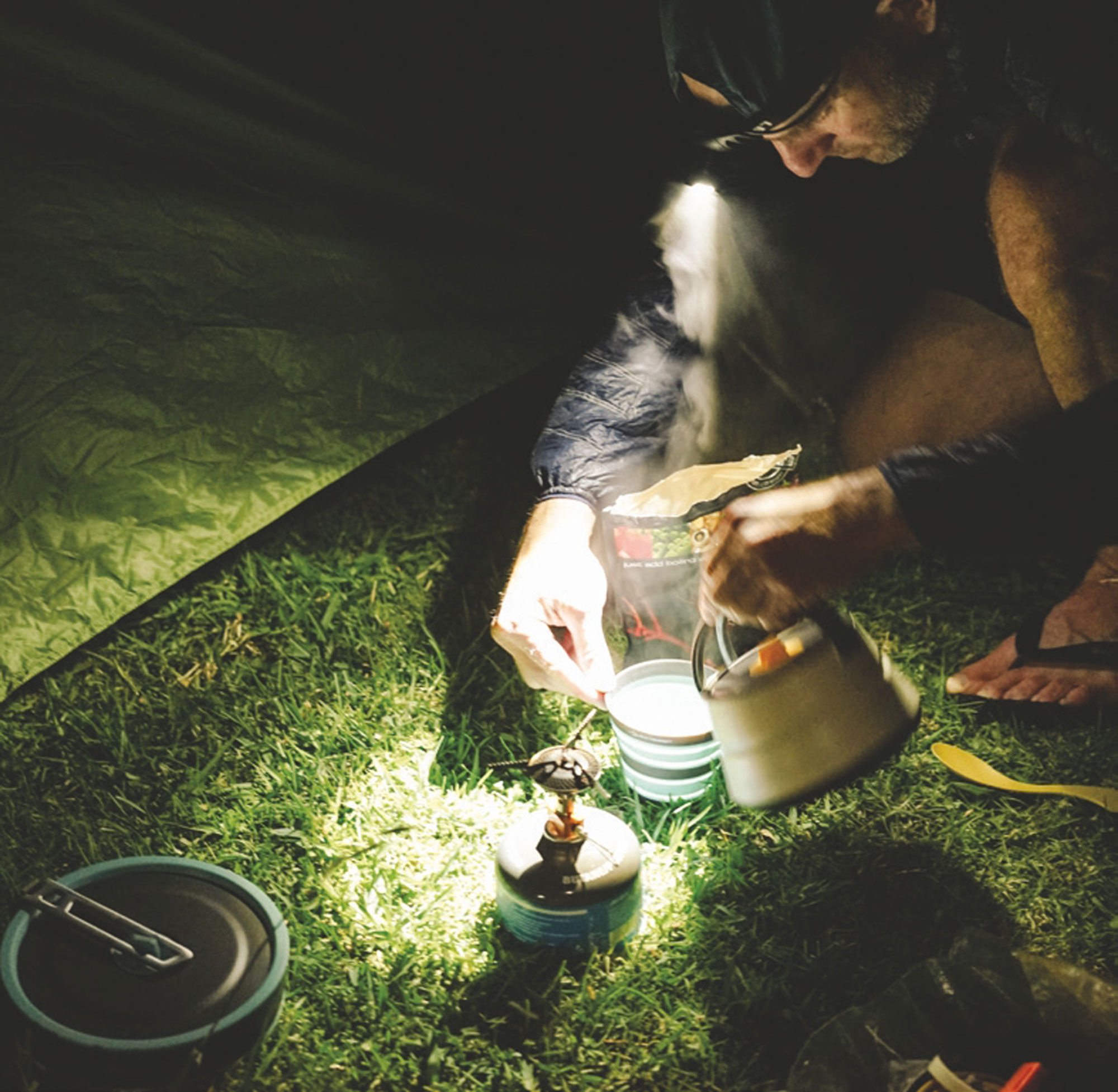
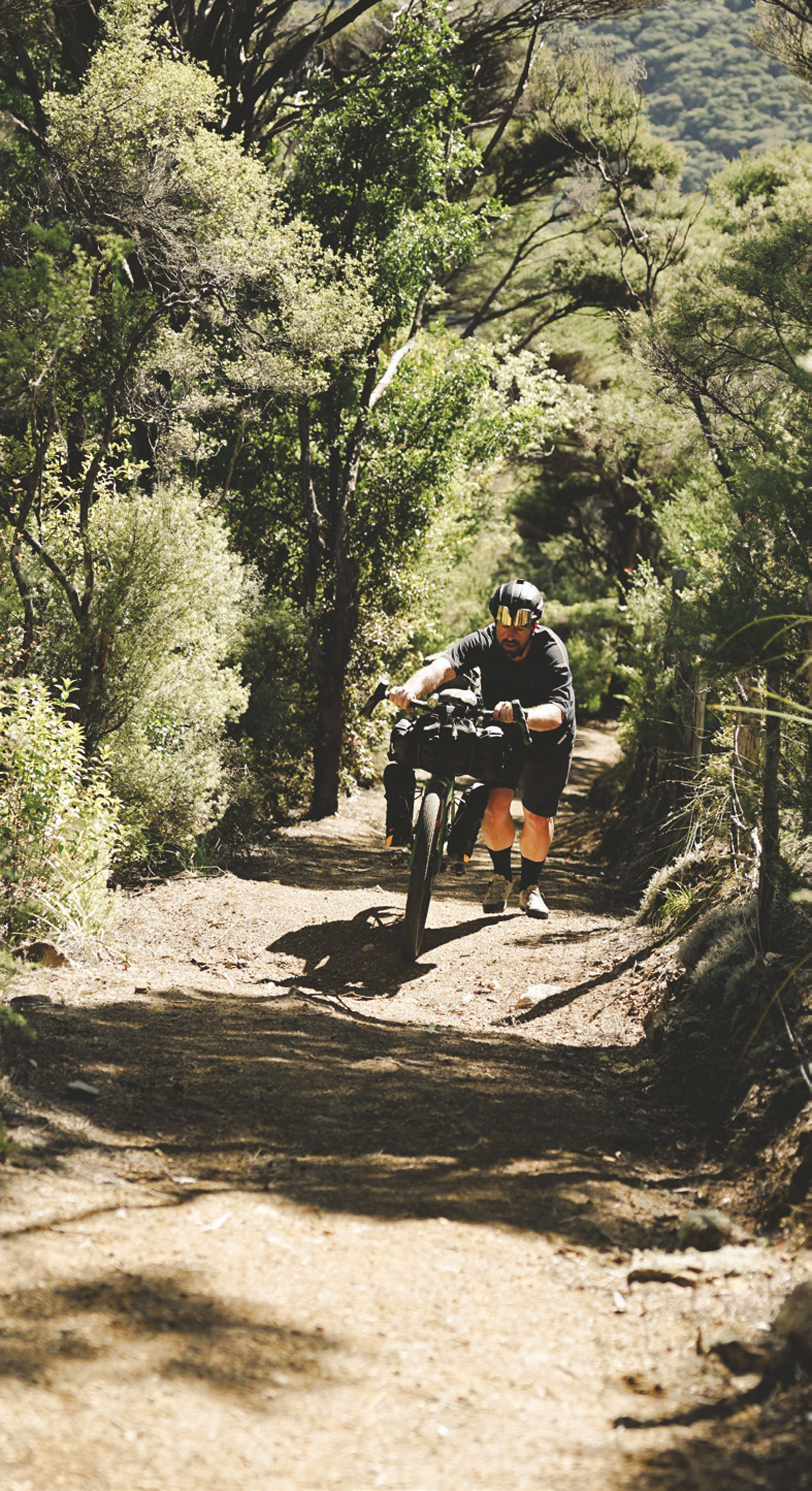
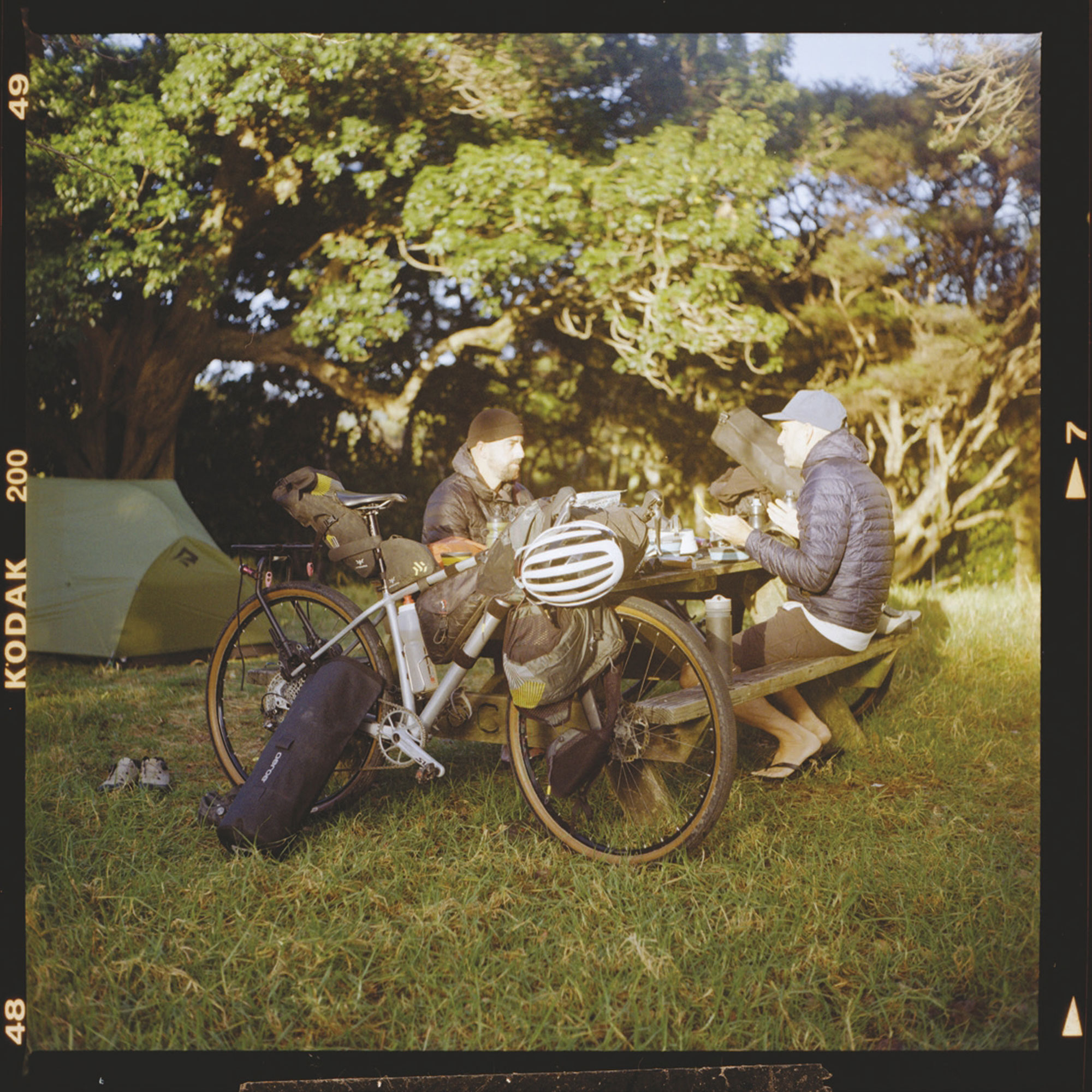
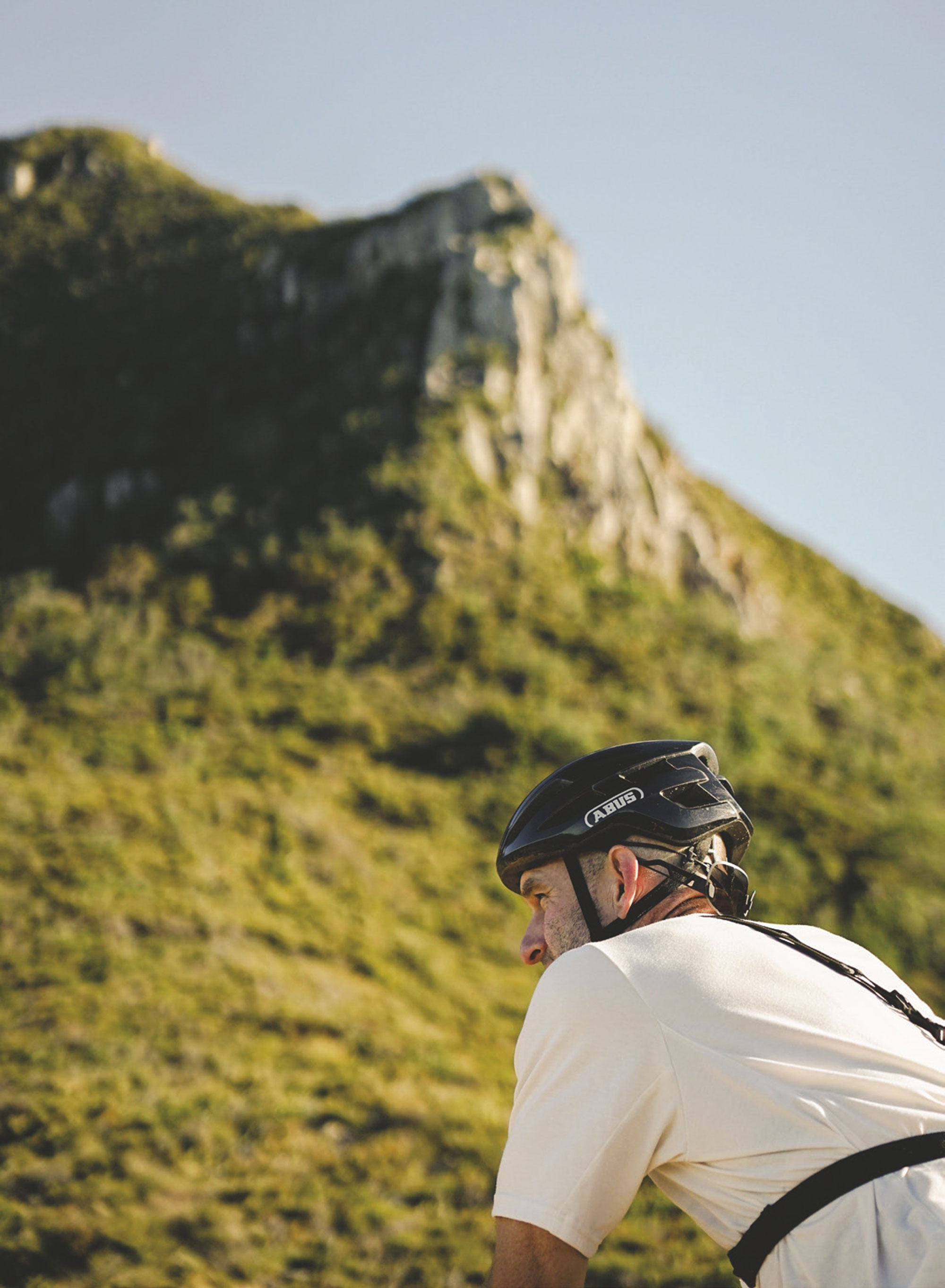
No matter how fleeting the escapade, those handful of days lived in the outdoors leave an indelible mark.
I packed the last bits onto my bike – there’s a real sense of self-sufficiency and freedom experienced during these types of trips.
As we pushed off, the trail immediately launched into another brutal climbing effort, forcing us to instantly dismount and push our bikes up the steep pitches. One of the crew from the ferry, who’d done a lot of bikepacking, said it was best ridden from the other way. He wasn’t wrong as we continued to get on and off up the severely steep parts. After what seemed like ages – but was less than an hour – we merged with a gravel road. This descent dropped us into the village of Tryphena. Refuelling on flat whites, we discussed our timing – it seemed we still had a solid window to squeeze in one final exploratory leg along the island’s southern shores before needing to hustle back. The venture to the south didn’t really eventuate too much as we couldn’t ride some of the tracks past the road end. However, the views back to Coromandel were amazing – as were the shelled beaches. We rapidly retreated along the same route, back to the store for a few snacks before boarding the ferry. I grabbed some supplies and popped them into my musette, as did the others, before heading for the boat ramp. We could see the ferry docking as we jaunted around the pristine coastline towards it.
Whereas our outbound passage was wracked with heavy seas and queasiness, our return voyage across the Hauraki Gulf was absolute glass – the decks sun- drenched and placid. I tried to savour the remaining moments, unplugged from civilization. We sat on the deck amongst the trucks and cars eating tuna wraps, with Aotea’s shores in the distance. All too soon, Auckland’s unmistakable skyline came into view. The concrete jungle signalled the end of our island exploration. Rather than rushing the re- immersion, we intentionally decompressed from the trip with a burger in the city, despite feeling slightly overwhelmed by the masses of people, music, and busyness. We pedalled home on the bike lanes as the streetlights flickered on. My mind was still mentally checked out and already dreaming of the next off- grid exodus. No matter how fleeting the escapade, those handful of days lived in the outdoors leave an indelible mark. On the other side of these experiences you’re forever changed, topped up, and once again ready to tackle whatever life throws at you.


